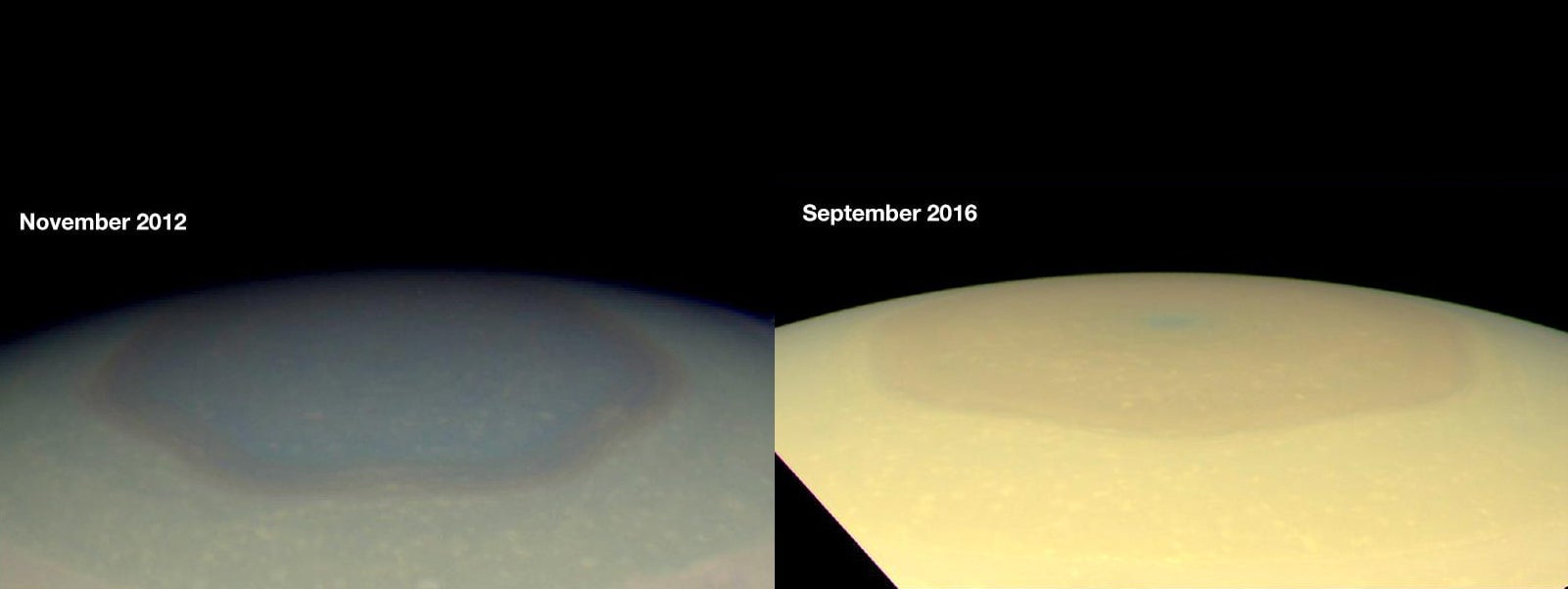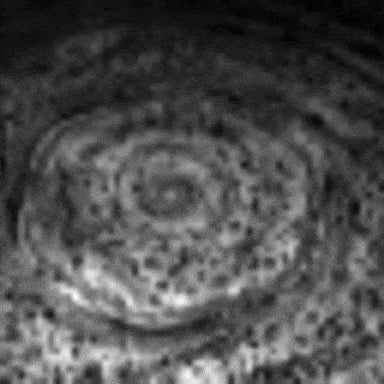A weird hexagon pattern on Saturn that’s as big as the Earth has changed color—and nobody knows why
In a list of wonders in our solar system, Saturn’s hexagon ranks high. Discovered by the Voyager mission in the 1980s, it’s a cloud pattern that swirls around the north pole of the ringed planet. Each side of the hexagon is longer than the diameter of the Earth, and its total surface area (192 million square miles) is almost exactly the same as Earth’s (197 million square miles).


In a list of wonders in our solar system, Saturn’s hexagon ranks high. Discovered by the Voyager mission in the 1980s, it’s a cloud pattern that swirls around the north pole of the ringed planet. Each side of the hexagon is longer than the diameter of the Earth, and its total surface area (192 million square miles) is almost exactly the same as Earth’s (197 million square miles).

Also, it turns out that the hexagon can change color. As you can see in the image above, in November 2012 it looked blue. Four years later, it’s now almost completely yellow. Nobody knows why, but this is what we do know about this strange saturnine phenomenon.
When Voyager first spotted the cloud pattern on Saturn, scientists thought that the hexagon may have been a creation of a one-time storm on the gas giant. However, when Cassini saw the pattern was still there three decades later, scientists needed another explanation.
In 2011, researchers at the University of Porto came up with one. Their mathematical model suggested that different wind speeds at various altitudes of Saturn are responsible for the striking geometric pattern. They created a lab experiment to see whether the model held up, and it did:
As for the color, scientists think it’s down to chemicals generating a haze that changes with the seasons. Summers on Saturn last about seven years. Currently, the planet’s north pole is approaching the peak of summer, with the solstice in May 2017. As the atmosphere heats up, the proportion of chemicals that cause the reflection of yellow light may increase.
The hexagon is a kind of six-sided jet stream of fast-flowing gases. The structure stops haze particles from outside the hexagon from mixing with those inside. That may be why the hexagon’s color looks different to the rest of the clouds on Saturn.
But that’s just one theory. We won’t know for sure what’s really going on until a space probe like Juno (which is around Jupiter now) is sent to Saturn to collect the specific data we need for a more definitive answer.